Research Area A - Publications 2009
01-Dec-2009
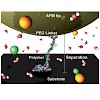
A method based on atomic force microscopy is used to delineate the properties that determine single-molecule adhesion onto solid substrates in aqueous environment. Hydrophobicity as well as electrical properties of the substrate and the polymer are varied. In addition, the influence of the solvent composition, in particular the effect of ions, on the molecular ...
16-Nov-2009
Phys. Chem. Chem. Phys., online article
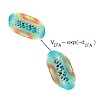
Limits and optimization of a solar energy conversion system consisting of a photochemical charge separating unit coupled to an energy storage state are explored by multi-objective genetic algorithms. Pareto fronts were evaluated to obtain information about the ideal parameter combinations, guaranteeing highest efficiency. The light absorbing and charge separating ...
13-Nov-2009
Journal of Molecular Biology, online article
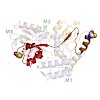
In the past decade, single-molecule force spectroscopy has provided new insights into the key interactions stabilizing folded proteins. A few recent studies probing the effects of ligand binding on mechanical protein stability have come to quite different conclusions. While some proteins seem to be stabilized considerably by a bound ligand, others appear to be ...
11-Nov-2009
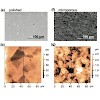
The nanostructure of materials is supposed to affect polymer adhesion at the solid/liquid interface by variations of the exposed surface area. In contrast, our studies on the nanotribology of single recombinant spider silk proteins onto smooth and rough surfaces made of surgical stainless steel show no effect of the surface morphology. This is explained by the ...
10-Nov-2009
Wiley homepage
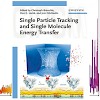
Closing a gap in the literature, this handbook gathers all the information on single particle tracking and single molecule energy transfer. It covers all aspects of this hot and modern topic, from detecting virus entry to membrane diffusion, and from protein folding using spFRET to coupled dye systems, as well recent achievements in the field. Throughout, the ...
09-Nov-2009
Chem. Phys. Chem., online article
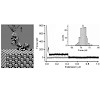
The adhesion of polypeptides and proteins at interfaces is important for a wide variety of systems—from the adhesion onto vessels during their production process over functional coatings to protein–membrane interactions in single cells. Herein, we apply an atomic-force-microscopy-based single-molecule method and poly-D-tyrosine to determine the adhesion strength ...
06-Nov-2009
PLOS Pathog., online article
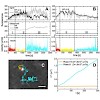
Assembly and release of human immunodeficiency virus (HIV) occur at the plasma membrane of infected cells and are driven by the Gag polyprotein. Previous studies analyzed viral morphogenesis using biochemical methods and static images, while dynamic and kinetic information has been lacking until very recently. Using a combination of wide-field and total internal ...
03-Oct-2009
Physics of Life Review, online article
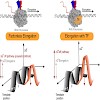
Most of the essential cellular processes such as polymerisation reactions, gene expression and regulation are governed by mechanical processes. Controlled mechanical investigations of these processes are therefore required in order to take our understanding of molecular biology to the next level. Single-molecule manipulation and force spectroscopy have over the ...
01-Oct-2009
ERC
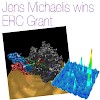
CIPSM-Investigator Jens Michaelis has done it! Jens received a grant of nearly 1,5 million Euros from the European Research Council for the next five years. Jens will explore the understanding of the molecular mechanism of nucleosome remodelling using single-molecule fluorescence resonance energy transfer (FRET). In eukaryotic cells the DNA is packaged into ...
30-Sep-2009
Journal of Raman Spectroscopy, online article
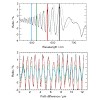
Femtosecond stimulated Raman microscopy (FSRM) is an upcoming technique in nonlinear microscopy which facilitates rapid chemical mapping. It employs femtosecond white-light pulses as probe pulses and intense picosecond pulses as pump pulses. Stimulated Raman scattering (SRS) occurs at the focus of a scanning microscope. Chemical constituents in the sample are ...
30-Sep-2009
Optics Express, online article
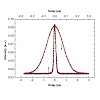
In femtosecond stimulated Raman microscopy (FSRM) a spectrally broad pulse (Raman probe) and a spectrally narrow pulse (Raman pump) interact in a sample and thereby generate a Raman spectrum of the focal volume. Here a novel light source for FSRM is presented. It consists of an 8-fs laser (repetition rate of 75 MHz) operating as Raman probe. A Yb3+ based fiber ...
25-Sep-2009
Journal of Photochemistry and Photobiology A: Chemistry, online article
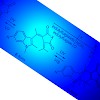
The dependence of the pericyclic ring-opening reaction of indolylfulgides and indolylfulgimides on excess energy is investigated by quantum efficiency measurements and by ultrafast spectroscopy. The ring-opening reaction shows a pronounced improvement of reaction efficiency up to a factor of 6, when excess energy is available either by increasing the temperature ...
16-Sep-2009
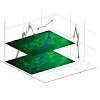
We developed a new method for real-time, three-dimensional tracking of fluorescent particles. The instrument is based on a laser-scanning confocal microscope where the focus of the laser beam is scanned or orbited around the particle. Two confocal pinholes are used to simultaneously monitor regions immediately above and below the particle and a feedback loop is ...
10-Aug-2009
PNAS, online article
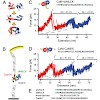
The eukaryotic signaling protein calmodulin (CaM) can bind to more than 300 known target proteins to regulate numerous functions in our body in a calcium-dependent manner. How CaM distinguishes between these various targets is still largely unknown. Here, we investigate fluctuations of the complex formation of CaM and its target peptide sequences using ...
07-Aug-2009
Science, online article

We demonstrate the ability to engineer complex shapes that twist and curve at the nanoscale from DNA. Through programmable self-assembly, strands of DNA are directed to form a custom-shaped bundle of tightly cross-linked double helices, arrayed in parallel to their helical axes. Targeted insertions and deletions of base pairs cause the DNA bundles to develop ...
06-Aug-2009
Chemical Physics Letters, online article
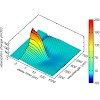
Quantum efficiencies and ultrafast dynamics of the ring-closure and ring-opening reaction of a trifluorinated dicyclopropyl indolylfulgide with improved photostability are investigated by stationary and ultrafast absorption spectroscopy. The ring-closure reaction occurs on the time scale of 200 fs and is found to be temperature independent (T = 287–333 K). ...
21-Jul-2009
PNAS, online article
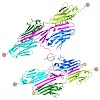
Mechanical stability of bonds and protein interactions has recently become accessible through single molecule mechanical experiments. So far, mechanical information about molecular bond mechanics has been largely limited to a single direction of force application. However, mechanical force acts as a vector in space and hence mechanical stability should depend on ...
20-Jul-2009
Nucleic Acids Research, online article
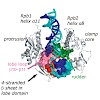
Crystallographic studies of the RNA polymerase II (Pol II) elongation complex (EC) revealed the locations of downstream DNA and the DNA-RNA hybrid, but not the course of the nontemplate DNA strand in the transcription bubble and the upstream DNA duplex. Here we used singlemolecule Fluorescence Resonance Energy Transfer (smFRET) experiments to locate nontemplate ...
08-Jul-2009
The Journal of Physical Chemistry, 2009, 97, 267- 76 published on 08.07.2009
Biophysical Journal , online article
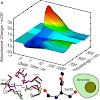
Studies have shown that trans-cis isomerization of retinal is the primary photoreaction in the photocycle of the light-driven proton pump bacteriorhodopsin (BR) from Halobacterium salinarum, as well as in the photocycle of the chloride pump halorhodopsin (HR). The transmembrane proteins HR and BR show extensive structural similarities, but differ in the ...
02-Jul-2009
Nano Letters, online article
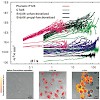
We apply mesoporous thin silica films with nanometer-sized pores as drug carriers and incorporate the widely used anticancer drug Doxorubicin. Through single-molecule based measurements, we gain mechanistic insights into the drug diffusion inside the mesoporous film, which governs the drug-delivery at the target-site. Drug dynamics inside the nanopores is ...
01-Jun-2009
Phys. Biol., online article
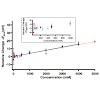
In this paper we probe the influence of surface properties, pH and salt on the adhesion of recombinant spider silk proteins onto solid substrates with single molecule force spectroscopy. A single engineered spider silk protein (monomeric C16 or dimeric (QAQ)8NR3) is covalently bound with one end to an AFM tip, which assures long-time measurements for hours with ...
07-Apr-2009
Journal of Controlled Release, 2009, 137, 136-45 published on 07.04.2009
Journal of Controlled Release, online article
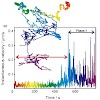
Magnetofection, gene delivery under the influence of a magnetic field, is a technique to increase transfection efficiency by enforcing gene vector contact with a target cell. Mechanisms of magnetic lipoplex internalization and intracellular details of magnetofection are still unknown. In this study, cellular dynamics of magnetic lipoplexes were examined in real ...
31-Mar-2009
Rev. Sci. Instrum., online article
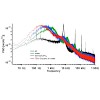
The spring constant of cantilever in atomic force microscopy (AFM) is often calibrated from thermal noise spectra. Essential for accurate implementation of this “thermal noise method” is an appropriate fitting function and procedure. Here, we survey the commonly used fitting functions and examine their applicability in a range of environments. We find that ...
23-Mar-2009
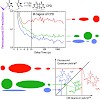
Photoreactions induced by ultraviolet radiation are among the most important external hazards for the integrity of DNA.1 The photolesion with the highest abundance is the [2 + 2] photoaddition of thymine bases adjacent on a DNA strand.2 This photoaddition yields a cyclobutane pyrimidine dimer (CPD). The formation of the CPD lesion has first been described in ...
04-Mar-2009
Small, 2009, DOI: 10.1002/smll.200801549, Volume 5, Issue 10, pages 1169–1175, published on 04.03.2009
Small, online article
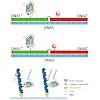
Due to the specificity of Watson–Crick base pairing, DNA is an excellent molecule for the fabrication of nanostructures. It has been shown that DNA can be used as a scaffold for positioning proteins and synthetic molecules with nanometer accuracy. As the next step in adding complexity and functionality to these nanodevices, optical addressability is incorporated. ...
01-Mar-2009
www.nature.com, online article
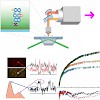
The molecular chaperone heat-shock protein 90 (Hsp90) is one of the most abundant proteins in unstressed eukaryotic cells. Its function is dependent on an exceptionally slow ATPase reaction that involves large conformational changes. To observe these conformational changes and to understand their interplay with the ATPase function, we developed a single-molecule ...
23-Feb-2009
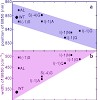
The peripheral antenna complex (LH2) of wild type and mutants of the LH2 α-subunit of purple bacterium Rhodobacter sphaeroides are investigated by transient and stationary absorption spectroscopy. The time for energy transfer from the bacteriochlorophyll (BChl) molecules B800 to B850 is found to depend on the mutation and varies between 0.7 ps for wild type LH2 ...
Wavelength and solvent independent photochemistry: the electrocyclic ring-closure of indolylfulgides
11-Feb-2009
Photochemical & Photobiological Sciences , online article
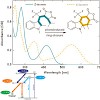
A wavelength and solvent dependent study of a photochromic indolylfulgide is presented. The ring-closure reaction is characterized using stationary and time-resolved spectroscopy with femtosecond time resolution. After excitation into the first excited singlet state (S1) the photoprocesses proceed on ultrafast timescales (0.3–0.45 ps) in both polar and non-polar ...
31-Jan-2009
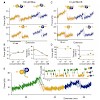
Single-molecule force spectroscopy allows superb mechanical control of protein conformation. We used a custom-built low-drift atomic force microscope to observe mechanically induced conformational equilibrium fluctuations of single molecules of the eukaryotic calcium-dependent signal transducer calmodulin (CaM). From this data, the ligand dependence of the full ...
14-Jan-2009
The Journal of Physical Chemistry, online article
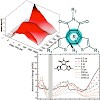
The dynamics of the ring-closure reaction of three different bis(thiophen-3-yl)maleimides are investigated using ultrafast spectroscopy in the visible range. The structures of the molecules differ with respect to substitution of the thiophene ring and the maleimide. The experiments reveal reaction kinetics which point to the population of an excited electronic ...
04-Jan-2009
Chemical Physics, online article
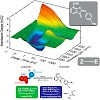
Four newly synthesized Hemithioindigo-based peptide-switches with changing meta/para-substitution-pattern within the stilbene-part of the molecule are characterized with time-resolved absorption spectroscopy. The different substances undergo a light-induced Z/E-isomerization: the reaction proceeds on a picosecond timescale with time constants <50 ps for the Z → E ...










